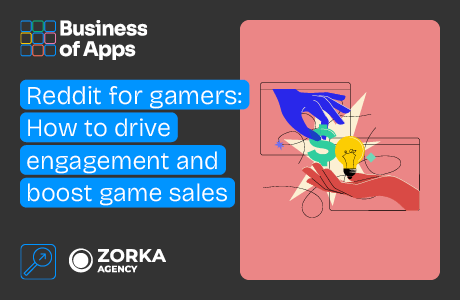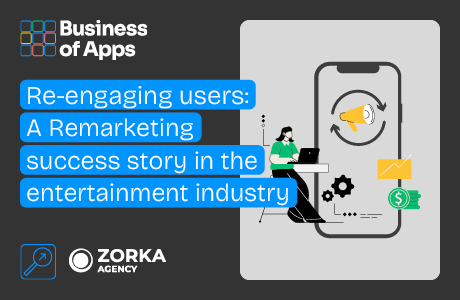Mobile gaming remains one of the most competitive spaces in entertainment, and creators have only become more central to how games grow. In 2024, influencer marketing moved from a supporting role to a strategic cornerstone for top publishers. It wasn’t just about visibility; it was about performance, retention, and long-term engagement.
Drawing insights from our State of Mobile Gaming report, we’ve taken a closer look at how the 200 top-ranking mobile games in the U.S. leveraged YouTube creators last year — and how those strategies are already shaping the trends we’re seeing this year.
YouTube’s enduring power in mobile gaming
When it comes to driving measurable, long-term results, YouTube remains the go-to platform for mobile gaming brands. Its reach and influence continue to outperform other channels, making it a foundational element of any performance-driven marketing strategy.
Among the many formats, the 60-90 second integration has proven to be especially effective, consistently delivering strong returns on ad spend. These brief yet impactful moments capture the essence of a game, leaving players eager to dive in.
QR codes have quickly become an industry standard, effortlessly connecting content with conversion by providing players instant access to exclusive promotions and in-game rewards.
Influencer marketing across mobile gaming genres
Influencer marketing has become integral to mobile gaming, though its impact varies by genre. RPG and MMORPGs, with franchises like Raid: Shadow Legends, Honkai: Star Rail, and Marvel Strike Force, are the heaviest investors, using influencers as key drivers of success. About 60% of these titles rely heavily on influencer campaigns, with creators shaping both the narrative and gameplay experience.
Strategy games, such as Rise of Kingdoms and Call of Dragons, are no strangers to influencer partnerships either, often turning to YouTube creators for long-form content. Roughly 35% of the top strategy games leverage this approach for sustained engagement.
Action and shooter games like Call of Duty: Mobile focus on more niche creators, selecting influencers who align with their specific audience. While only 20% of action titles engage in influencer marketing, their targeted campaigns often pay off with highly engaged players.
Casual games like Monopoly GO! and June’s Journey are taking a different route, teaming up with influencers in lifestyle, entertainment, and DIY circles. Though just 20% of casual games use influencers, this strategy has proven successful, with over half of gamers more likely to buy based on influencer recommendations.
Social casino games, once sidelined, are making a bold push, increasing their investment in influencer-led event campaigns to appeal to a wider audience, signaling their growing importance in the space.
The investor landscape
In 2024, mobile game publishers invested an average of $447K annually in YouTube influencer marketing, though the spending varied based on strategy. Long-term creator partnerships were the most lucrative, averaging $1.1 million per year, while seasonal campaigns tied to in-game events typically spent around $272K. Test campaigns, aimed at exploring new partnerships, were the smallest, averaging $100K.
The difference was even clearer on a campaign-by-campaign basis. While the typical campaign costs $79K, RPG and MMORPG titles regularly surpassed $131K. Meanwhile, social casino games spent more selectively, averaging just $26K per campaign, as they navigated their growing role in influencer marketing.
High-cost installs = High-quality players
For most apps, optimization is simple: the lower the CPI is, the higher the ROAS is. But for games with in-app monetization, the quality of players matters more than the quantity. A few paying users are more profitable than an army of freeloaders.
And quality players cost more. Ilia Lotarev, Head of Strategy at Zorka.Agency, explains, “you’re not going to find them with trash banner traffic. So it’s no surprise that successful games spend so much on brand awareness and influencer campaigns: motivated players, albeit more expensive initially, yield higher returns.”
Finding the right influencers
Gaming-focused YouTube creators dominate the influencer space, accounting for nearly 80% of all partnerships. Yet, a shift is underway. Casual and social casino games are branching out, turning to lifestyle influencers to capture wider audiences. RPG and MMORPG titles favor mid-tier creators, typically those attracting 100K–250K views per video, while FPS and strategy games lean into niche creators, focusing on deep engagement over mass reach.
A notable trend is the growing importance of long-term relationships. Around 20% of creators collaborate repeatedly with the same brand, with this figure rising in RPG, MMORPG, FPS, and social casino games. This shift underscores a move toward sustained partnerships, with influencers evolving into brand ambassadors rather than temporary campaign participants.
The rise of creator-generated content
One standout trend is the growth of Dedicated Creator-Generated Content (CGC), where brands partner with influencers to create YouTube channels focused entirely on a single game. This strategy not only helps launch new titles but also keeps established games relevant through consistent content. As the competition for attention sharpens, expect more brands to invest in influencer-led channels as a long-term engagement tactic in 2025.
Changing content consumption habits
As audience behavior evolves, marketers face new hurdles. Video retention has dropped by 7.4%, now averaging just under 40%. Despite this, retention for promotional content remains steady, highlighting the importance of compelling storytelling in sponsored segments. Another key shift is the move from mobile devices to larger screens. With more players watching gaming content on desktops, laptops, and smart TVs, brands must adapt their creative assets for these diverse viewing experiences.
Partnerships shift and QRs
While current data shows promotional content maintaining steady retention, industry trends suggest a significant drop in the near future.
As Alex Oleinykov, Strategist at Zorka.Agency, explains, “this is the reason why more brands are now moving past those one-off promo posts and are building long-term partnerships, turning quick and short promos into something that sticks around better and helps brands keep the product consistently in the limelight, even as consumer attention spans continue to decrease.”
In parallel, the shift of viewers to larger screens is the exact reason why QR codes are now an essential part of every campaign, as it could attract more “clicks” and downloads for the campaign, which could otherwise be ignored because of inconvenience.
What lies ahead
Mobile gaming influencer marketing is rapidly evolving into a more sophisticated and strategic endeavor. As brands diversify their approaches — integrating long-term partnerships, seasonal campaigns, and creator-driven content — the landscape becomes even more competitive. YouTube continues to dominate, but how brands leverage influencer relationships is shifting to meet the demands of an increasingly savvy audience.
Looking ahead to 2025, the key to success will not only be in choosing the right creators but also in aligning those creators with deeply integrated, authentic campaigns. Crafting seamless calls-to-action, ensuring a balance between engagement and reach, and remaining agile in response to fast-shifting audience behaviors will be crucial for staying ahead.
Publishers who can innovate, anticipate these changes, and maintain flexibility in their influencer strategies will not only maximize their ROI but also secure a lasting competitive advantage in an industry that is showing no signs of slowing down.
With the stakes higher than ever, the future of mobile gaming influencer marketing promises to be both challenging and exhilarating for brands willing to adapt and evolve.











